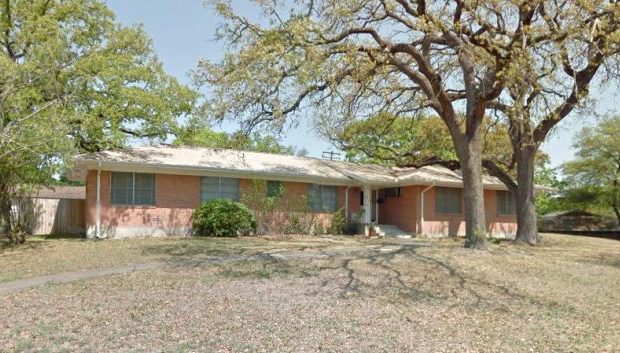1960s dairy homestead could be Austin’s next landmark
Thursday, March 16, 2017 by
Elizabeth Pagano After some hesitation, the Historic Landmark Commission has begun the process of historic landmarking for a Cherrywood home that was once the site of the Schieffer Dairy.
The house, which is located at 3901 Brookview Road, is a 1961 replacement of the original 1948 home. But neighbors hoping to stop its demolition successfully made a case for its preservation at the most recent meeting of the commission.
Commissioners voted to initiate historic zoning based on architecture, community value and the natural environment of the home, particularly the trees. Historic zoning was initiated in a vote of 8-2, with commissioners Alex Papavasiliou and Blake Tollett voting in opposition.
The vote came despite the fact that Historic Preservation Officer Steve Sadowsky said that, though the Schieffer family and their dairy were important to the history of the city, this particular house did not merit individual landmark status.
Hector Avila, who was representing the owner, said they were willing to erect a plaque honoring the family but agreed the specific house had no historic value.
“A lot of neighbors are mostly opposed to the subdivision, but I don’t think (this commission) is a venue for opposing a subdivision,” said Avila. “The venue for opposing subdivisions is the Planning Commission. They shouldn’t have a house as hostage for opposing a subdivision.”
The Schieffer Willowbrook Neighborhood Association voted against the demolition and the subdivision.
Sherri Whitmarsh, who lives across the street from the property, presented a history of the Schieffer homestead. She explained that both Maplewood Elementary School and Duplex Nation were part of the original Schieffer property. She said that her main concerns were that the demolition would impact the trees on the property, that there could be an increased risk of flooding and that the planned new development could mean higher property taxes for the neighborhood.
Gay Goforth, who lives on Brookview, also spoke against the subdivision and the demolition.
“An established, well-maintained central city neighborhood with almost all its original housing that is decades old should not have houses demolished and new houses built that do not fit in the original character of the neighborhood,” she said. “While a government may not want to micromanage design aesthetics, residents have arrived to live in a neighborhood that looks like the era it started from. … I don’t want to look out my window every day at a sharp-edged, contemporary box.”
Avila pointed out that the neighbors who spoke against the demolition largely did not address the historic value of the home in particular. Commissioners openly wrestled with whether the home met the criteria for designation as an individual landmark, though they seemed to agree that it would be a contributing structure if the neighborhood was a local historic district.
“I hate to vote to release the demolition permit when the re-subdivision is still in the air. I don’t want it to be construed that the landmark commission approved the demolition,” said Commissioner Terri Myers.
Myers said that, while she understood that the city steered clear of getting involved with deed restrictions, the restriction cited by the neighbors did seem to prohibit subdivision of corner lots.
“This house is going either way,” said Avila, who explained that if they were not able to subdivide the lot, they would build a bigger new house instead.
Though commissioners mulled whether the home merited individual landmarking, in the end they did seem swayed by the argument that the lot was the cornerstone of the neighborhood, which had been plotted around it. That, Commissioner Kevin Koch argued, spoke to the home as an “anchor property,” and the siting of the lot and landscaping was an argument for preservation. Though “landscape features” are one of the criterion for preservation, it is seldom used by the commission.
Papavasiliou said he did not think it was appropriate in this case.
“I find that a stretch, to say the least,” said Papavasiliou. “There are large trees across this town everywhere … 27,000 square feet of open space that these people now own becoming parkland, essentially. That is a very slippery slope in my opinion.”
The commission’s vote starts the historic landmarking process, though the commission will have to vote again in order to begin the rezoning of the property. Because the homeowner does not want historic zoning for the home, a supermajority of the commission and, ultimately, City Council will be required to designate the property historic.
The Austin Monitor’s work is made possible by donations from the community. Though our reporting covers donors from time to time, we are careful to keep business and editorial efforts separate while maintaining transparency. A complete list of donors is available here, and our code of ethics is explained here.
You're a community leader
And we’re honored you look to us for serious, in-depth news. You know a strong community needs local and dedicated watchdog reporting. We’re here for you and that won’t change. Now will you take the powerful next step and support our nonprofit news organization?









